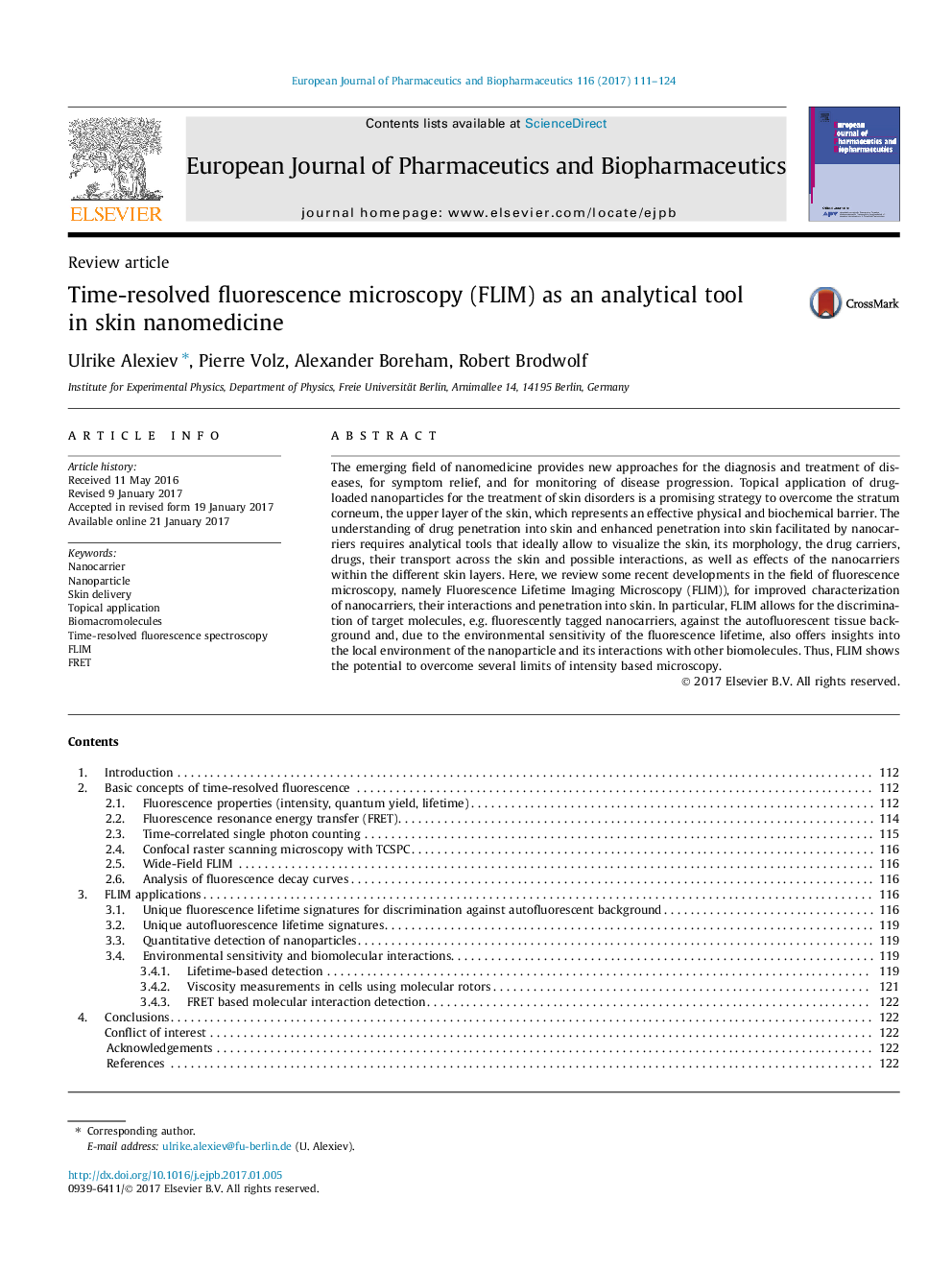| Article ID | Journal | Published Year | Pages | File Type |
|---|---|---|---|---|
| 5521550 | European Journal of Pharmaceutics and Biopharmaceutics | 2017 | 14 Pages |
The emerging field of nanomedicine provides new approaches for the diagnosis and treatment of diseases, for symptom relief, and for monitoring of disease progression. Topical application of drug-loaded nanoparticles for the treatment of skin disorders is a promising strategy to overcome the stratum corneum, the upper layer of the skin, which represents an effective physical and biochemical barrier. The understanding of drug penetration into skin and enhanced penetration into skin facilitated by nanocarriers requires analytical tools that ideally allow to visualize the skin, its morphology, the drug carriers, drugs, their transport across the skin and possible interactions, as well as effects of the nanocarriers within the different skin layers. Here, we review some recent developments in the field of fluorescence microscopy, namely Fluorescence Lifetime Imaging Microscopy (FLIM)), for improved characterization of nanocarriers, their interactions and penetration into skin. In particular, FLIM allows for the discrimination of target molecules, e.g. fluorescently tagged nanocarriers, against the autofluorescent tissue background and, due to the environmental sensitivity of the fluorescence lifetime, also offers insights into the local environment of the nanoparticle and its interactions with other biomolecules. Thus, FLIM shows the potential to overcome several limits of intensity based microscopy.
Graphical abstractDownload high-res image (223KB)Download full-size image
